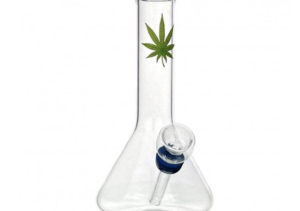The safety of THC vaping products is a critical concern for consumers and regulators alike, given the unique challenges associated with inhaled substances. Ensuring product integrity from manufacturing to consumption involves adherence to specific standards and practices. For individuals seeking these products, understanding the market and available options is important. For instance, thc vape uk represents a category of products available in certain regions, highlighting the need for consumers to be aware of the safety measures and regulations in place. This focus on safety is not merely about compliance; it is about protecting public health and ensuring a consistent, reliable product experience.
Manufacturing Standards and Quality Control
Safe THC vaping products begin with stringent manufacturing standards. Reputable manufacturers adhere to Good Manufacturing Practices (GMP), which ensure that products are consistently produced and controlled according to quality standards. This includes using high-quality raw materials, maintaining clean production facilities, and implementing strict process controls.
Quality control measures involve testing at various stages of production. This includes testing raw cannabis extracts for purity and potency, as well as testing the final product for contaminants. The goal is to ensure that the product contains the advertised amount of THC and is free from harmful substances.
Ingredient Purity and Additives
The purity of ingredients is paramount in THC vaping products. The primary components are typically cannabis extract (containing THC) and a carrier liquid. Historically, some vaping products contained additives like Vitamin E acetate, which was linked to severe lung injuries. As a result, regulatory bodies and responsible manufacturers have banned or strongly advised against the use of such harmful additives.
Safe vaping products should ideally contain only cannabis extract and natural terpenes, or other approved food-grade carrier liquids that have been thoroughly vetted for inhalation safety. Transparency about all ingredients used is a key indicator of a manufacturer’s commitment to safety.
Contaminant Testing and Analysis
Comprehensive testing for contaminants is a cornerstone of safety standards for THC vaping products. This involves screening for a range of harmful substances that could be present in the cannabis plant or introduced during the extraction and manufacturing processes.
Key contaminants tested for include:
- Pesticides: Residues from agricultural practices can be harmful when inhaled.
- Heavy Metals: These can leach from vaping device components or be present in the cannabis plant itself.
- Residual Solvents: Chemicals used in the extraction process must be completely removed from the final product.
- Microbial Contaminants: Mold, mildew, and bacteria can grow on cannabis plants and pose health risks.
Third-party laboratory testing is crucial for verifying the absence of these contaminants. Reputable brands provide Certificates of Analysis (CoAs) that confirm their products have undergone rigorous testing.
Device Safety and Design
The vaping device itself plays a significant role in product safety. Devices should be designed and manufactured to prevent overheating, leakage, and the release of harmful byproducts. This includes using high-quality, heat-resistant materials for cartridges and ensuring proper battery safety.
Components such as heating elements should be made from inert materials that do not degrade or release toxic substances when heated. Consumers should also be aware of the importance of using devices as intended and avoiding modifications that could compromise their safety.
Labeling and Packaging Requirements
Clear and accurate labeling is essential for consumer safety. Product labels should provide comprehensive information, including:
- THC Content: Precise measurement of THC per serving or per cartridge.
- Ingredients List: A full disclosure of all components, including carrier liquids and terpenes.
- Manufacturing Date and Expiration Date: To ensure product freshness and efficacy.
- Batch Number: For traceability in case of a recall or quality issue.
- Warning Labels: Information about potential health risks, especially for pregnant women, minors, and individuals with certain medical conditions.
- Dosage Recommendations: Clear guidance on how to use the product safely.
Child-resistant packaging is also a critical safety standard to prevent accidental ingestion by minors.
- Key safety standards for THC vaping products:
- Good Manufacturing Practices (GMP): Ensures consistent quality and production control.
- Ingredient Purity: Use of high-quality cannabis extract and approved carrier liquids, avoiding harmful additives like Vitamin E acetate.
- Comprehensive Contaminant Testing: Screening for pesticides, heavy metals, residual solvents, and microbial contaminants.
- Third-Party Lab Verification: Provision of Certificates of Analysis (CoAs) from independent laboratories.
- Device Integrity: Use of safe, heat-resistant materials for cartridges and reliable battery components.
- Clear and Accurate Labeling: Detailed information on THC content, ingredients, manufacturing dates, and warnings.
- Child-Resistant Packaging: To prevent access by minors.
- Traceability Systems: Ability to track products from source to consumer for recalls.
- Consumer Education: Providing users with information on safe usage and storage.
- Regulatory Compliance: Adherence to all local and national laws and regulations.
Regulatory Oversight and Evolution
The regulatory landscape for THC vaping products is constantly evolving. Governments and health authorities are developing and refining regulations to address emerging safety concerns and ensure consumer protection. This includes setting limits on THC potency, mandating specific testing protocols, and enforcing labeling requirements.
The goal of regulatory oversight is to create a safe and transparent market for THC vaping products, reducing the risks associated with unregulated alternatives. Consumers should stay informed about the latest regulations in their region to ensure they are using compliant products.

Final thoughts
Ensuring the safety of THC vaping products requires a multi-faceted approach, encompassing rigorous manufacturing standards, comprehensive testing, transparent labeling, and responsible consumer practices. Adherence to these safety measures is crucial for minimizing risks and promoting a safe and reliable experience for users. As the industry evolves, continuous vigilance and adaptation of safety protocols will remain paramount.




